Espanola Island has a number of unique wildlife opportunities. One that we were unable to see was the repopulated land tortoise area, following the successful reintroduction after nearly being wiped out by the 1970s. This area is out of bounds to visitors, even with a guide.
As soon as we landed we made our first sighting of the marine iguanas, who here have developed brighter colourings than those on other islands. Their basic habits are still the same; plunging into the cold water to eat and then hanging about trying to bring their body temperature back up again. We understand that their stronger colouring comes from the higher proportion of red algae in their diet (but we could be wrong, we have been given so much information that we are beginning to feel a bit numb!).
However, the main attraction for our visit here was the opportunity to get close to waved albatrosses. These huge seabirds are very good at flying but their combination of large size and weak legs makes it very difficult for them to land. This island offers just the right amount of flat space for them to perform the difficult landing and to establish their rudimentary nests. So almost all of the world's population of these birds return to this island to breed at this time of the year. It was great to see them overhead in effortless flight and a real contrast to see how inelegantly they waddle around on land.
Like so many of the Galapagos creatures, they show little concern about people passing quite close. In fact one was looking after her egg right on the pathway and didn’t move when we came. Without any proper nest, they protect the eggs by rolling them around from place to place until hatched. The chief disadvantage of this system of egg care is that a high proportion of eggs get broken on the rocky ground.
We also visited the Nazca Booby breeding area. These boobies are similar to the blue-footed kind but have less elaborate courting rituals (and no blue feet of course). Breeding couples covered all the rocks and there were a good many of the fluffy chicks, keen to be fed by the attentive parents.
From the cliffs we could look down onto the shore and see some spectacular 'blow holes’. As the waves come in, water is forced down channels in the rocks and the pressure forces the water up in great spouts. Although this looks similar to a geyser, it is purely the force of the tide and waves.
Later we snorkelled along a part of the rocky coast of the island, exploring some of the caves. This was great snorkelling as a combination of clear water and lots of good places for marine animals meant there was plenty to see. It was certainly good enough to convince Jesse that she wants to learn to dive. Best spot of the day to Jen, who found an octopus in one of the caves!
Albatross, fresh albatross!
Tuesday, April 20, 2010
 Espanola, Galapagos Islands, Ecuador
Espanola, Galapagos Islands, Ecuador
Other Entries
-
89Road blocks, demos and a scenic journey to Cusco
Mar 0645 days prior Cusco, Peruphoto_camera76videocam 0comment 5
Cusco, Peruphoto_camera76videocam 0comment 5 -
90Touring the Sacred Valley
Mar 0744 days prior Ollantaytambo, Peruphoto_camera50videocam 0comment 8
Ollantaytambo, Peruphoto_camera50videocam 0comment 8 -
91Visiting the Inca sites around the city.
Mar 0942 days prior Cusco, Peruphoto_camera46videocam 0comment 3
Cusco, Peruphoto_camera46videocam 0comment 3 -
92The White City
Mar 1635 days prior Arequipa, Peruphoto_camera92videocam 0comment 2
Arequipa, Peruphoto_camera92videocam 0comment 2 -
93Strange markings at Dead Bull!
Mar 2328 days prior Toro Muerto, Peruphoto_camera32videocam 0comment 0
Toro Muerto, Peruphoto_camera32videocam 0comment 0 -
94Colca Canyon 1: Snow and the Ice Maiden
Mar 2526 days prior Chivay, Peruphoto_camera17videocam 0comment 2
Chivay, Peruphoto_camera17videocam 0comment 2 -
95Colca Canyon 2: Watch out, condors about!
Mar 2724 days prior Cabanaconde, Peruphoto_camera56videocam 1comment 1
Cabanaconde, Peruphoto_camera56videocam 1comment 1 -
96Colca Canyon 3: Hot and Passionate
Mar 2823 days prior Arequipa, Peruphoto_camera21videocam 0comment 0
Arequipa, Peruphoto_camera21videocam 0comment 0 -
97More lines and symbols but this time they're BIG!
Mar 3120 days prior Nazca, Peruphoto_camera41videocam 0comment 2
Nazca, Peruphoto_camera41videocam 0comment 2 -
98Sun worshipping through the years
Apr 0416 days prior Trujillo, Peruphoto_camera62videocam 0comment 2
Trujillo, Peruphoto_camera62videocam 0comment 2 -
99We go in search of GOLD!
Apr 0713 days prior Chiclayo, Peruphoto_camera58videocam 0comment 4
Chiclayo, Peruphoto_camera58videocam 0comment 4 -
100Sun, surf and a very loud children's fairground
Apr 119 days prior Máncora, Peruphoto_camera22videocam 0comment 3
Máncora, Peruphoto_camera22videocam 0comment 3 -
101In search of exotic animals: we find iguanas
Apr 137 days prior Guayaquil, Ecuadorphoto_camera21videocam 0comment 1
Guayaquil, Ecuadorphoto_camera21videocam 0comment 1 -
102We arrive and dive.
Apr 164 days prior Puerto Ayora, Ecuadorphoto_camera64videocam 2comment 1
Puerto Ayora, Ecuadorphoto_camera64videocam 2comment 1 -
103We set sail, eventually.
Apr 173 days prior Bartoleme, Ecuadorphoto_camera46videocam 0comment 4
Bartoleme, Ecuadorphoto_camera46videocam 0comment 4 -
104Iguanas in all their many forms.
Apr 182 days prior Santa Fe Island, Ecuadorphoto_camera32videocam 0comment 3
Santa Fe Island, Ecuadorphoto_camera32videocam 0comment 3 -
105Not all the animals here are friendly.
Apr 191 day prior San Cristobal, Ecuadorphoto_camera8videocam 0comment 1
San Cristobal, Ecuadorphoto_camera8videocam 0comment 1 -
106Albatross, fresh albatross!
Apr 20 Espanola, Ecuadorphoto_camera29videocam 0comment 1
Espanola, Ecuadorphoto_camera29videocam 0comment 1 -
107Jen has mixed feelings about stingrays!
Apr 211 day later Floreana, Ecuadorphoto_camera11videocam 0comment 1
Floreana, Ecuadorphoto_camera11videocam 0comment 1 -
108That's the way, A-a A-a, I like it!
Apr 222 days later Isabela, Ecuadorphoto_camera25videocam 1comment 2
Isabela, Ecuadorphoto_camera25videocam 1comment 2 -
109Big Boy Diego struts his stuff and we fly out.
Apr 233 days later Puerto Ayora, Ecuadorphoto_camera10videocam 0comment 1
Puerto Ayora, Ecuadorphoto_camera10videocam 0comment 1 -
110In the dangerous city we have too many cocktails
Apr 255 days later Quito, Ecuadorphoto_camera31videocam 0comment 2
Quito, Ecuadorphoto_camera31videocam 0comment 2 -
111We look for the Virgin on the Rocks.
Apr 266 days later Ipiales, Colombiaphoto_camera22videocam 0comment 0
Ipiales, Colombiaphoto_camera22videocam 0comment 0 -
112A bright white city with a great dark bar.
Apr 299 days later Popayan, Colombiaphoto_camera31videocam 0comment 0
Popayan, Colombiaphoto_camera31videocam 0comment 0 -
113We avoid hot spots and enjoy suburban life.
May 0212 days later Medellin, Colombiaphoto_camera34videocam 1comment 0
Medellin, Colombiaphoto_camera34videocam 1comment 0 -
114Nobody expects the Spanish Inquisition...
May 0515 days later Cartagena, Colombiaphoto_camera26videocam 0comment 3
Cartagena, Colombiaphoto_camera26videocam 0comment 3 -
115Traditional fishing village or party-goers heaven?
May 1020 days later Taganga, Colombiaphoto_camera16videocam 1comment 4
Taganga, Colombiaphoto_camera16videocam 1comment 4 -
116Hotel of the Snows in another white city
May 1222 days later Girón, Colombiaphoto_camera19videocam 0comment 0
Girón, Colombiaphoto_camera19videocam 0comment 0 -
117We like the houses but not the pizza...
May 1424 days later Tunja, Colombiaphoto_camera52videocam 0comment 7
Tunja, Colombiaphoto_camera52videocam 0comment 7 -
118Fossils, dinosaurs &, surprisingly, more willies!
May 1727 days later Villa De Leyva, Colombiaphoto_camera47videocam 0comment 2
Villa De Leyva, Colombiaphoto_camera47videocam 0comment 2 -
119Gold, art, violence and the hunt for a drug baron
May 2030 days later Bogota, Colombiaphoto_camera55videocam 0comment 3
Bogota, Colombiaphoto_camera55videocam 0comment 3 -
120Strange statues in the wilds of nowhere.
May 2333 days later San Agustin, Colombiaphoto_camera71videocam 2comment 1
San Agustin, Colombiaphoto_camera71videocam 2comment 1 -
121An eventful trip to see some old decorating
May 2535 days later Tierradentro, Colombiaphoto_camera53videocam 0comment 0
Tierradentro, Colombiaphoto_camera53videocam 0comment 0 -
122Is travelling hopefully better than arriving?
May 2737 days later Popayan, Colombiaphoto_camera7videocam 0comment 0
Popayan, Colombiaphoto_camera7videocam 0comment 0 -
123Colombia chooses; bulldog or guinea-pig?
May 2838 days later Pasto, Colombiaphoto_camera12videocam 0comment 3
Pasto, Colombiaphoto_camera12videocam 0comment 3 -
124Fun and games at the middle of the world
May 3141 days later Quito, Ecuadorphoto_camera32videocam 0comment 1
Quito, Ecuadorphoto_camera32videocam 0comment 1

 Espanola, Galapagos Islands, Ecuador
Espanola, Galapagos Islands, Ecuador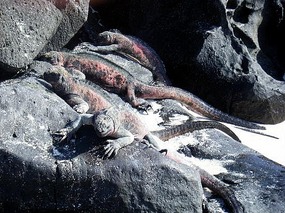
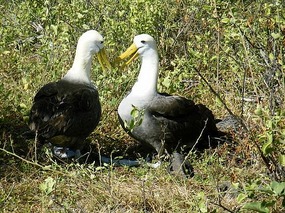
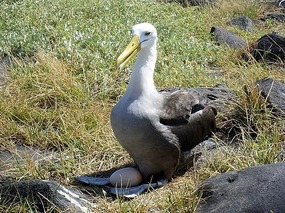
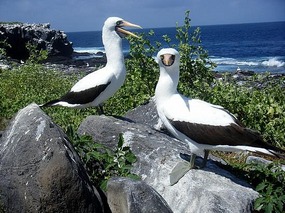
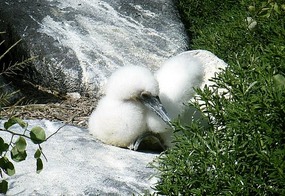
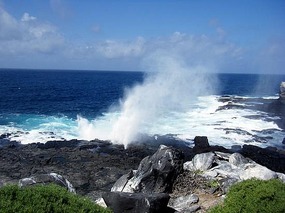



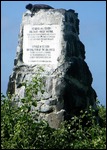
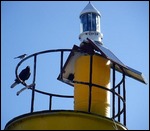
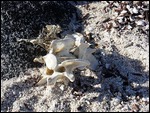
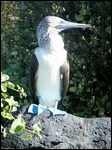
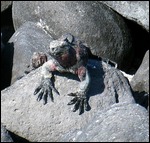
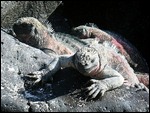
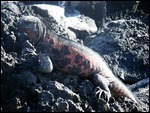

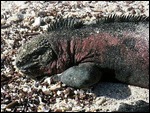

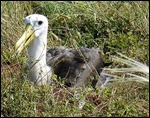
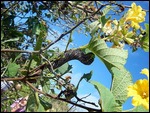
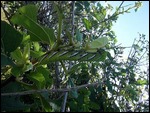
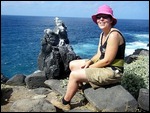
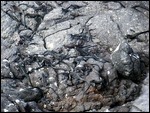

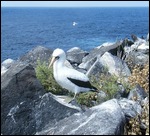


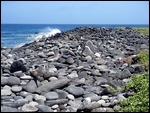

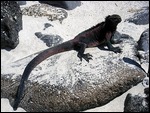

2025-05-22